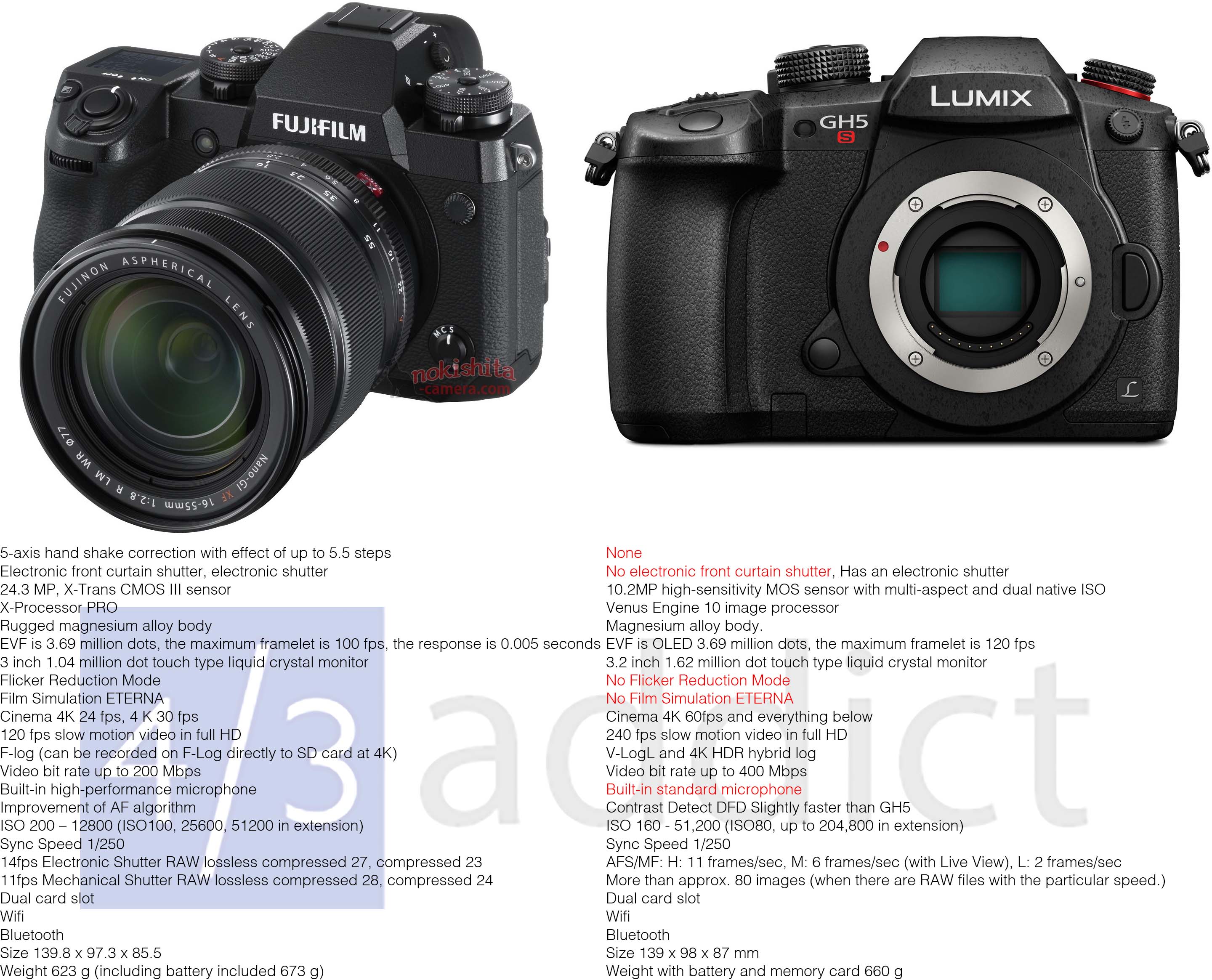
The Fujifilm X-H1 sits somewhere between the Panasonic GH5 and GH5S since it is one of the few hybrid cameras with Cinema 4k support, but I wanted to create this chart showing how it compares to the new Panasonic GH5S since the X-H1 has more professional video features than the GH5 even though the GH5 has an unlimited record time compared to the X-H1’s 15min/30min hard limit. To begin the Panasonic has a very clear edge with their codec and compression, which is second to none, but the Fujifilm X-H1 has a big resolution advantage for stills and superior AF performance thanks to phase detection AF. The codec limitations of the X-H1 might be overcome with an external recorder, but we will have to wait for professional videographers to weigh in, while the GH cameras are limited by their roughly 10 and 20-megapixel sensors.
The Panasonic GH5S might have better low light performance, but that is yet to be tested and so far it hasn’t lived up to the claims that it can compete with the Sony a7SII. The Panasonic GH5S doesn’t have a size or weight advantage either, with both cameras being very similar in size. Here is where removing the IBIS might be an advantage for Panasonic on the GH5S, because man professionals would rather use stabilization rigs for their video cameras than IBIS so the X-H1 loses points here for some, but it’s interesting to see Fujifilm kind of copy Panasonic’s camera strategy up until now. Fujifilm has a high end stills camera the Fujifilm X-T2 and now a hybrid camera the Fujifilm X-H1, so maybe they will make a straight up video camera like Panasonic. They also have the GFX which is just a high end over all camera. It seems Panasonic did something right before anyone else with the release of the original Panasonic GH camera, which Sony emulated and now Fujifilm is too.
Panasonic GH5S: B&H Photo / Adorama / Amazon
Panasonic GH5 B&H Photo / Amazon / Adorama
via FujiAddict